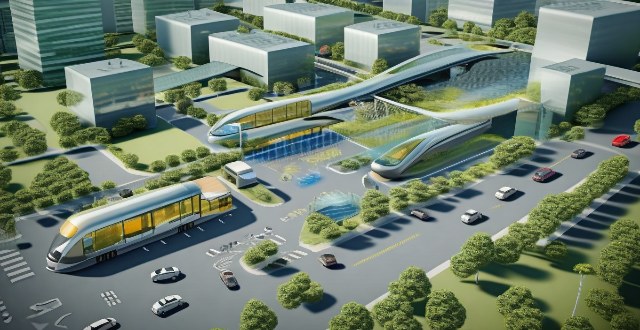The integration of smart cities and future transportation systems will involve the use of advanced technologies such as ITS, data analytics, multimodal transportation networks, and urban planning and design. This integration will lead to more efficient, sustainable, and accessible transportation systems that benefit all residents.

The Integration of Smart Cities and Future Transportation Systems
Introduction
As cities around the world continue to grow and urbanize, the concept of "smart cities" is becoming increasingly popular. A smart city is an urban area that uses different types of electronic data collection sensors to supply information which is used to manage assets and resources efficiently. One of the key components of a smart city is its transportation system, which needs to be efficient, sustainable, and accessible for all residents. In this article, we will explore how the development of smart cities will integrate with future transportation systems.
Key Features of Future Transportation Systems
Connectivity
Future transportation systems will be highly connected, with vehicles communicating with each other as well as with infrastructure such as traffic lights and road signs. This connectivity will enable real-time data exchange, allowing for more efficient routing and reduced congestion.
Automation
Automated vehicles are expected to play a significant role in future transportation systems. These vehicles will be able to operate without human intervention, reducing the risk of accidents caused by human error. Automation will also allow for more efficient use of road space, as vehicles can travel closer together at higher speeds.
Sustainability
Future transportation systems will prioritize sustainability, with a focus on reducing emissions and promoting alternative modes of transportation such as walking, cycling, and public transit. Electric vehicles and other forms of clean energy will become increasingly prevalent, reducing the reliance on fossil fuels.
Integration with Smart Cities
The integration of future transportation systems with smart cities will involve several key components:
Intelligent Transportation Systems (ITS)
ITS refers to the application of advanced technologies to improve the efficiency and safety of transportation systems. In a smart city, ITS will include features such as intelligent traffic management, real-time information sharing, and automated vehicle control. These technologies will help to reduce congestion, improve air quality, and enhance overall mobility within the city.
Data Analytics
Data analytics will play a crucial role in the integration of smart cities and future transportation systems. By collecting and analyzing data from various sources, including sensors, cameras, and GPS devices, city planners can gain insights into traffic patterns, passenger demand, and other factors that affect transportation. This information can then be used to optimize routes, schedule services, and make informed decisions about infrastructure investments.
Multimodal Transportation Networks
Smart cities will promote multimodal transportation networks, which involve a combination of different modes of transportation such as walking, cycling, public transit, and private vehicles. These networks will be designed to provide seamless connections between different modes, making it easy for residents to switch between them as needed. For example, a resident might walk to a nearby train station, take the train to a central location, and then transfer to an electric bus or shared bike for the final leg of their journey.
Urban Planning and Design
Urban planning and design will also play a crucial role in the integration of smart cities and future transportation systems. Cities will need to be designed with an emphasis on walkability, accessibility, and green spaces. This will encourage residents to use alternative modes of transportation such as walking and cycling, reducing the reliance on private vehicles. Additionally, cities will need to invest in infrastructure that supports these modes, such as dedicated bike lanes, pedestrian-friendly sidewalks, and well-maintained public transit systems.
Conclusion
The development of smart cities will have a significant impact on future transportation systems. By integrating advanced technologies such as ITS, data analytics, multimodal transportation networks, and urban planning and design, cities can create more efficient, sustainable, and accessible transportation systems that benefit all residents. As we look towards the future of transportation, it is clear that smart cities will play a vital role in shaping how we move around our urban environments.